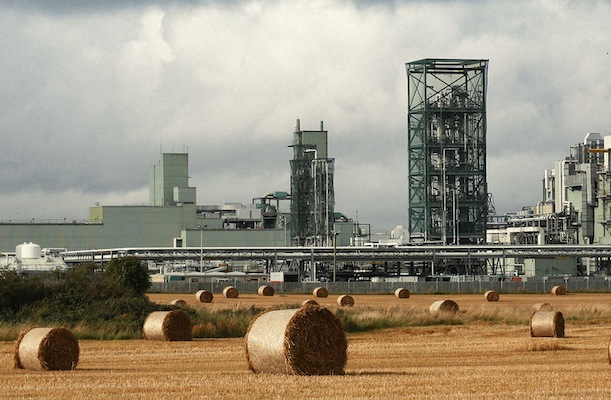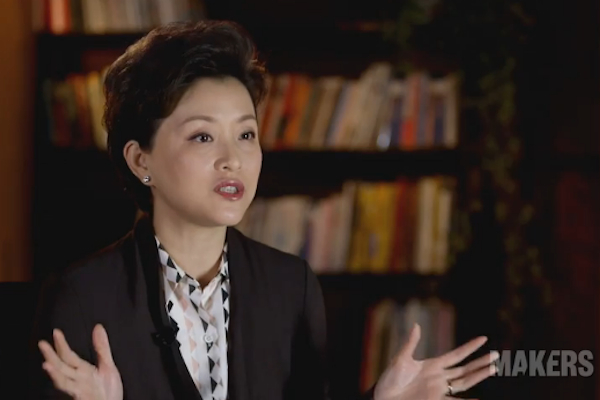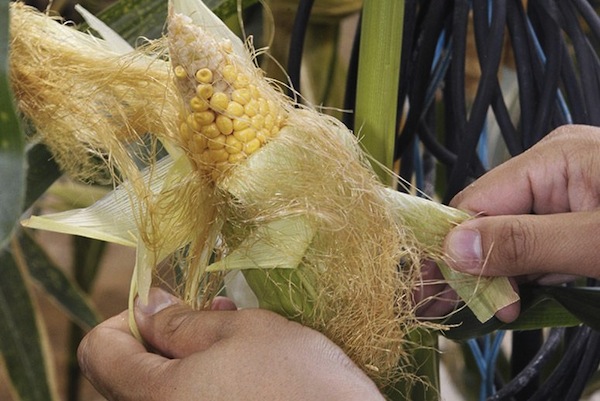What comes to mind when you think of sustainable food production? If you’re like many Americans, you probably picture a local farmer’s market, celebrity-branded salad dressing or an organic farmer growing heirloom lettuces and free-range chickens. Now, what comes to mind when you think of industrial food production? Do you envision acres of conventionally grown corn stretching as far as the eye can see? Giant feed lots? Factories that process food into “center aisle” products for the supermarket? When we think about sustainable food production, most people don’t think about solutions coming from Big Business. Yet corporations have the potential to become our biggest ally in meeting SDG 12, the sustainability development goal set forth by the United Nations to ensure sustainable consumption and production patterns by 2030. Here’s why Our need to eat poses serious threats to the natural systems that sustain us. Whether it’s small and organic or large and conventional, farming of both livestock and crops already uses up nearly 40 percent of Earth’s non-ice surface and is responsible for 14 percent of global greenhouse-gas emissions — more if you count the GHG emissions caused by deforestation, which has largely been driven by agricultural expansion. Agriculture also […]
Continue reading... →Shampoo. Nail polish. Sofas in the halls of Congress. All have been the subject of recent stories about the hidden dangers to our health in products we buy and use. Governments around the world are stepping up actions to better protect their citizens. Here in the United States, Congress is finally poised to strengthen the Environmental Protection Agency’s chemical safety authority. But improved government oversight is only part of the solution. Companies along the retail supply chain must also make it their mission to create products that are safer for consumers. To put it simply: We need companies to revolutionize how business is done. We need them to get Behind the Label. We began our crusade for safer chemicals in the marketplace by partnering with the largest retailer in the world, Walmart, a few years back. It prompted the company to announce a new policy in September 2013 for chemicals in its household and personal care products that will transform the world’s largest retailer – and its vast supply chain. But Walmart is, despite its size, only one piece of the global retail industry. We won’t get the revolution consumers deserve unless the majority of retailers and product manufacturers everywhere adopt safer chemicals policies and practices. We […]
Continue reading... →New research finds that as climate change increases ozone levels, pollinators will have a harder timing finding plants that feed them. A rose by any other name would smell just as sweet, but a rose after climate change may not smell much at all. That’s going to be a problem for the bees that pollinate a third of the world’s food supply, according to new research. Flowers and other plants rely on microscopic scent molecules to attract the bees and other pollinators that feed on them. Climate change is going to disrupt that process, mostly because of ground-level ozone, which is projected to increase over the coming decades. The research, published in the journal New Phytologist, found that flowers’ fragile scent molecules break down more quickly as they are exposed to greater levels of ozone. “Ozone is a highly reactive pollutant that enhances the degradation of all plant volatiles in general, reducing their lifetimes,” said the study’s lead author, Gerard Farré-Armengol of the Centre for Ecological Research and Forestry in Barcelona, Spain. Increasing ozone levels will make flowers less attractive to pollinators because the plants won’t maintain their scent for as long or over as great a distance, a change that […]
Continue reading... →Consuming refined sugar can impact mood, decision-making, and memory. Here’s how good it can be to give it up.
Continue reading... →Performance fabrics that offer anti-bacterial and anti-odor qualities, as well as sun protection, may contain nanoparticles that are largely untested for human health effects. If you’ve been shopping for workout clothes lately, you may have seen labels making some extraordinary claims—namely, that you can work up a sweat and your clothes won’t smell when your exercise session is over. Sound too good to be true? You may want to think twice about buying clothes making such claims, because the anti-bacterial properties are brought to you by nanotechnology. While certain nanoparticles in clothing can kill off bacteria, as a whole they are largely untested, barely regulated, and may pose serious risks to your health and the Earth. Nanotechnology involves the use of very small particles, called nanoparticles, to bring certain characteristics to a product. Nanoparticles are defined as being between the range of 1-100 nanometers in size. A billion of them can fit on the head of a pin. Nanomaterials are currently used in body care products, as well as consumer products like cutting boards, towels, food, and, yes, clothes. The most common nanomaterials in clothing are nanosilver and nano-titanium dioxide. Nanosilver is woven into fabric to give it anti-bacterial properties, […]
Continue reading... →516 ARTS in Albuquerque, NM, is organizing a collaborative season of public programming in the fall of 2015 that explores climate change through the arts to create a platform for education and dialogue. The public programs for HABITAT: Exploring Climate Change Through the Arts will include: a series of exhibitions at 516 ARTS; the popular Downtown Block Party; special events with guest speakers; film screenings; and youth programs. Climate change is an urgent issue of both global and local concern. The Southwest can be considered one of the most “climate-challenged” regions of North America, with rising annual temperature averages, declining water supplies, and reduced agricultural yields. In New Mexico we’ve already seen destabilized and unpredictable weather patterns, water sources going dry, forests not recovering from fire, loss of urban trees, and crop failures. Public programs for HABITAT strive to raise awareness about these issues by taking an innovative approach to engaging with social and environmental change, and by bringing the community together to focus on sustainability. 516 ARTS will present a series of speakers to address the issues around climate change from both the science and art perspectives. Speakers include renowned artist Mel Chin, who is currently working on a project about […]
Continue reading... →Scientists and industry professionals are often called in to offer their expertise on various causes and products. And while practically all specialists can agree on some topics—such as climate change or the efficacy of a brand of toothpaste—there’s no clear consensus about the safety of GMO foods, which have been genetically altered to contain more nutrients or resist diseases.
Continue reading... →Hello, oh powerful woman who wants to make a difference in the world! As you may know, our motto at Women Of Green is: Turn Up the Volume. And that’s what we’re doing! Sharing stories of amazing women who are game changers in their world — and inspiring other women to do the same. But we need your help! We are looking for 200 Women Of Green Advocates to share our inspirational stories and posts daily on their social media channels. That will help us immensely to touch so many more women and inspire them to be the change in their world. Can you help us turn up the volume by sharing Women Of Green with your friends? Will you be one of our beloved Advocates that will help us create permanent positive change on the planet through the power of the feminine? To say thank you, In exchange for your ongoing efforts, I will offer our Advocates a free Life or Business coaching session ($250 value) on any topic or situation that is arising for you now in your life. If that sounds like something you would like to explore, please contact me here: carolyn (at) mindovermarkets (dot) com […]
Continue reading... →








